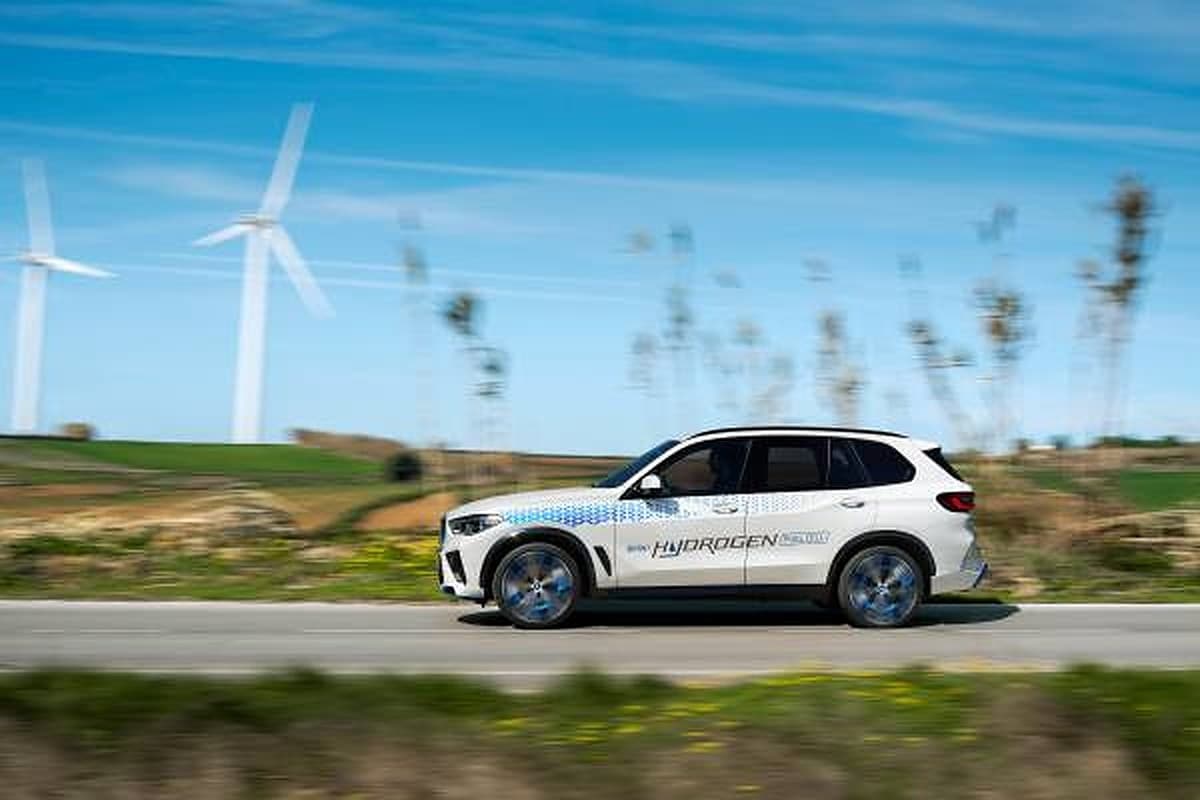Two years after unveiling the BMW i Hydrogen NEXT concept car, the Group will present the BMW iX5 Hydrogen at the IAA Mobility 2021 in Munich. Currently still in the series development phase, the hydrogen-powered Sports Activity Vehicle (SAV) will be one of several vehicles that visitors will be able to experience en route along the Blue Lane that connects the main exhibition area with other locations in the center of the city. city.
A limited series of the BMW iX5 Hydrogen, developed on the basis of the BMW X5, will be used for demonstration and test purposes from the end of next year. Its hydrogen fuel cell technology represents further proof of the BMW Group’s development expertise in the field of electric propulsion systems. “With the high-performance fuel cell and optimized battery, the propulsion system of the BMW iX5 Hydrogen is unique in the world”, said Juergen Guldner, head of BMW Group Hydrogen Fuel Cell Technology and Vehicle Projects. “With this, we forge new paths for sustainable driving pleasure”.
With the right conditions, hydrogen fuel cell technology has the potential to become a further pillar in the BMW Group’s powertrain portfolio for local CO2-free mobility. The BMW i brand, which is exclusively geared towards emission-free mobility, could in the future also offer vehicles with hydrogen propulsion, in addition to battery-electric models such as the BMW i3, BMW iX3, BMW iX and BMW i4.
BMW iX5 Hydrogen: design elements, but not only
The BMW iX5 Hydrogen is a modern luxury Sports Activity Vehicle (SAV) that combines innovative driving technology with the powerful proportions, comfort and versatility of a BMW X model. Individual exterior and interior design elements underline the car’s link with the BMW i brand, as well as the specific driving technology. The inner edge of the BMW kidney grille, the inserts in the 22-inch aerodynamic wheels and the attachments on the outside of the rear apron are all in BMW i Blue. The sill moldings and dashboard trim also sport a hydrogen fuel cell badge.
The mesh inserts covering the vents and for the cooling air at the front of the BMW iX5 Hydrogen, as well as the rear apron and diffuser feature a unique design. The ornamental grilles covering the BMW double kidney, the lower and two outer air intakes and the body elements for the lower rear trim all come from the BMW Group’s Additive Manufacturing Campus, which employs 3D printing to produce prototypes. and standard components. Additive manufacturing allows for a fast and highly flexible manufacturing process of components – some of which have geometric shapes that cannot be made with conventional manufacturing methods.
BMW iX5 Hydrogen: the peculiarity of the tires and the driving dynamics
The aero wheels of the BMW iX5 Hydrogen are equipped with sustainably produced tires made of natural rubber and rayon. Raw materials are extracted according to the standards of the independent Forest Stewardship Council (FSC). The BMW Group is the first automotive manufacturer in the world to use Pirelli tires made exclusively from certified natural rubber and rayon, a wood-based material, in its vehicles.
The BMW iX5 Hydrogen combines fuel cell technology with fifth-generation BMW eDrive. The propulsion system uses hydrogen as fuel by converting it into electricity in a fuel cell – providing electrical power of up to 125 kW / 170 hp, producing only water vapor as an emission. This propulsive power allows constant high speeds to be maintained even over long distances. The electric motor was developed from the fifth generation of BMW eDrive technology which is also used within the BMW iX. During overtaking and braking, it acts as a generator, injecting energy into a supply battery. The energy stored here is also used for particularly sporty driving maneuvers – providing a system output of 275 kW / 374 hp and guaranteeing the driving experience typical of the brand.
The hydrogen needed to power the fuel cell is stored in two 700 bar carbon fiber reinforced plastic (CFRP) tanks, which together contain nearly six kilograms of hydrogen. “Filling the hydrogen tanks takes only three or four minutes – so there are no limits to using the BMW iX5 Hydrogen for long distances, with only a few short stops in between, ”explains Guldner.
The Hydrogen that “pushes” towards one CO2-free mobility
According to a report from the International Energy Agency (IEA – International Energy Agency), hydrogen has considerable potential as a future source of energy in relation to global energy transition activities. Thanks to its storage and transportation capabilities, hydrogen has a variety of applications. Most industrialized countries are therefore adopting hydrogen-based strategies and supporting them with concrete roadmaps and projects. In the transport sector, hydrogen can become a further technological option, alongside battery electric mobility, to shape long-term sustainable individual mobility. However, this will depend on the competitive production of sufficient quantities of hydrogen via green energy, as well as on the expansion of the corresponding refueling infrastructure, currently already widely implemented in many countries.
The BMW Group welcomes and supports activities to promote innovation in Germany and Europe with a view to building a hydrogen economy and accelerating the production of green hydrogen. These specifically include large-scale hydrogen projects classified as Important Projects of Common European Interest (IPCEI). The projects of this European Union initiative, supported in Germany by the Federal Ministry of Economy and the Federal Ministry of Transport, encompass the entire value chain – from hydrogen production to transport to industrial applications.
















Leave a Reply
View Comments